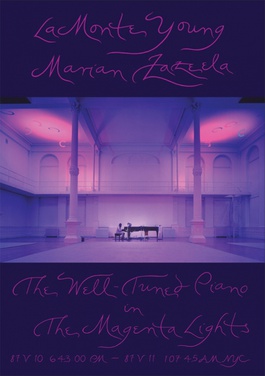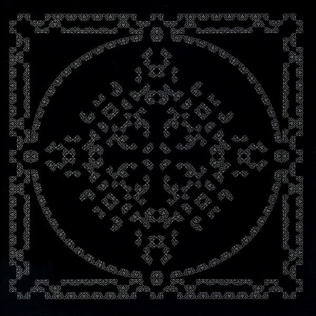
La Monte Thornton Young is an American composer, musician, and performance artist recognized as one of the first American minimalist composers and a central figure in Fluxus and post-war avant-garde music. He is best known for his exploration of sustained tones, beginning with his 1958 composition Trio for Strings. His compositions have called into question the nature and definition of music, most prominently in the text scores of his Compositions 1960. While few of his recordings remain in print, his work has inspired prominent musicians across various genres, including avant-garde, rock, and ambient music.

Anthony Schmalz Conrad was an American video artist, experimental filmmaker, musician, composer, sound artist, teacher, and writer. Active in a variety of media since the early 1960s, he was a pioneer of both drone music and structural film. As a musician, he was an important figure in the New York minimalist scene of the early 1960s, during which time he performed as part of the Theatre of Eternal Music. He became recognized as a filmmaker for his 1966 film The Flicker. He performed and collaborated with a wide range of artists over the course of his career.
Pandit Pran Nath was an Indian classical singer and master of the Kirana gharana singing style. Promoting traditional raga principles, Nath exerted an influence on notable American minimalist and jazz musicians, including La Monte Young, Terry Riley, and Don Cherry. He began performing in the United States in the 1970s, and established the Kirana Center for Indian Classical Music in 1972; he subsequently taught in various universities across the US and Europe.

Dia Art Foundation is a nonprofit organization that initiates, supports, presents, and preserves art projects. It was established in 1974 by Philippa de Menil, the daughter of Houston arts patron Dominique de Menil and an heiress to the Schlumberger oil exploration fortune; art dealer Heiner Friedrich, Philippa's husband; and Helen Winkler, a Houston art historian. Dia provides support to projects "whose nature or scale would preclude other funding sources."
Dream House, Dreamhouse or similar may refer to:
Drone music, drone-based music, or simply drone, is a minimalist genre of music that emphasizes the use of sustained sounds, notes, or tone clusters called drones. It is typically characterized by lengthy compositions featuring relatively slight harmonic variations. La Monte Young, one of its 1960s originators, defined it in 2000 as "the sustained tone branch of minimalism". Music containing drones can be found in many regional traditions across Asia, Australia, and Europe, but the genre label is generally reserved for music originating with the Western classical tradition. Elements of drone music have been incorporated in diverse genres such as rock, ambient, and techno.
Marian Zazeela is an American light artist, designer, calligrapher, painter and musician based in New York City. She was a member of the 1960s experimental music collective Theatre of Eternal Music, and is known for her collaborative work with her husband, the minimalist composer La Monte Young.
Lawrence Chandler is an American-born composer, musician and sound artist based in London. Best known as a founding member of seminal New York duo Bowery Electric he works within ambient, contemporary classical, electronic, experimental and postminimalist styles.

Dream House 78' 17" is a studio album by minimalist composer La Monte Young, artist Marian Zazeela, and their group the Theatre of Eternal Music. The album was originally released in 1974 by the French label Shandar. The length of the record, almost double what was then normal, was extremely unusual in its time.

Inside the Dream Syndicate, Vol. I: Day of Niagara or simply Day of Niagara is a bootleg recording of a 1965 performance by the minimalist music group the Theatre of Eternal Music, a.k.a. the Dream Syndicate. Contributors include future Velvet Underground members John Cale and Angus Maclise, composers La Monte Young and Tony Conrad, and artist Marian Zazeela. It received a release in 2000 by the label Table of the Elements against the wishes of Young.
The Theatre of Eternal Music was an avant-garde musical group formed by La Monte Young in New York City in 1962. The first group (1962–1964) of performers consisted of La Monte Young, Marian Zazeela, Angus MacLise, and Billy Name. From 1964 to 1966, Theatre of Eternal Music consisted of La Monte Young, Marian Zazeela, John Cale (viola), and Tony Conrad (violin), with sometimes also Terry Riley (voice). Since 1966, Theatre of Eternal Music has seen many permutations and has included Garrett List, Jon Gibson, Jon Hassell, Rhys Chatham, Alex Dea, Terry Jennings, and many others, including some members of the various 1960s groups. The group's self-described "dream music" explored drones and pure harmonic intervals, employing sustained tones and electric amplification in lengthy, all-night performances.

The Magic Chord is a chord and installation (1984) created by La Monte Young, consisting of the pitches E, F, A, B♭, D, E, G, and A, in ascending order and used in works including his The Well-Tuned Piano and Chronos Kristalla (1990). The latter was performed by the Kronos Quartet and features all notes of the magic chord as harmonics on open strings. The quartet has been described as, "offer[ing] perhaps the ultimate challenge in performing in a just environment".

The Well-Tuned Piano is an ongoing, improvisatory, solo piano work by composer La Monte Young. Begun in 1964, Young has never considered the composition or performance "finished", and he has performed incarnations of it several times since its debut in 1974. The composition utilizes a piano tuned in just intonation.

Tavares Henderson Strachan is a Bahamian-born conceptual artist. His contemporary multi-media installations investigate science, technology, mythology, history, and exploration. He lives and works in New York City and Nassau, Bahamas.
Earle Montrose Pilgrim was an American artist whose work is within the stylistic milieu of Abstract Expressionism and Figurative Expressionism. Working in the early 1950s until the mid-1970s, Pilgrim's style is characterized by figuration informed by abstraction. The artist fluctuated between epic, large-scale compositions and intimate canvases and worked with a variety of media from painting to experimental film. Pilgrim's oeuvre reflects the artist's various interests from avant-garde portraiture to the notion of the occult, which were all figured through a Modernist interest in coloration, abstraction, and expression.
The Just Alap Raga Ensemble is a Hindustani classical music ensemble, based in New York City, formed in 2002 by La Monte Young, Marian Zazeela, and Jung Hee Choi. The ensemble performs music in the tradition of the Kirana Gharana, a style inherited through Young and Zazeela's long discipleship under master Indian vocalist, Pandit Pran Nath. The music features extended alap sections and sustained vocal drones in just intonation over tamburas.

Jung Hee Choi is a South Korean-born artist and musician, based in New York City, working in video, performance, sound and multi-media installation. Since 1999, Choi has been a disciple of La Monte Young and Marian Zazeela in the study of music and art. Choi, with Young and Zazeela, is a founding member of The Just Alap Raga Ensemble, and has performed as vocalist with the ensemble since 2002. Choi's work has been presented in the U.S., Europe and Asia, including FRAC Franche-Comté, France; Berliner Festspiele, Germany; Dia Art Foundation, Guggenheim Museum and MELA Foundation Dream Houses, NYC; FRESH Festival, Bangkok; and the Korea Experimental Arts Festival, Korea. The New York Times listed Choi's Tonecycle for Blues performed by her Sundara All Star Band as one of The Best Classical Music Performances of 2017.

31 VII 69 10:26 - 10:49 PM / 23 VIII 64 2:50:45 - 3:11 AM The Volga Delta is an album by American musicians La Monte Young and Marian Zazeela, released in 1969 on Heiner Friedrich's Edition X label as a limited edition 12-inch vinyl.

Trio for Strings is a 1958 composition for violin, viola, and cello by American composer La Monte Young. It consists almost entirely of sustained tones and rests, and represents Young's first full embrace of "static" composition. It has been described as a central work of musical minimalism.











